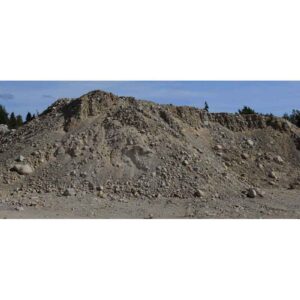Description
Slope stability analysis is a critical aspect of geotechnical engineering, providing essential insights into the safety and stability of natural and man-made slopes. As construction projects become more complex and urbanization increases, the need for accurate and efficient slope stability analysis has never been greater. This is where slope stability analysis software plays a pivotal role, optimizing the evaluation and management of slope stability. In this article, we will delve into the significance of slope stability analysis software, its key features, and how it revolutionizes geotechnical engineering.
Understanding the Importance of Slope Stability Analysis
Slope stability analysis is the process of assessing the stability of slopes, including natural hillsides, embankments, and excavations. It involves examining various factors such as soil properties, groundwater conditions, slope geometry, and external loads. The goal is to determine whether a slope is prone to failure and to develop mitigation strategies if necessary.
In geotechnical engineering, accurate slope stability analysis is crucial for multiple applications, including road construction, building foundations, dam safety, mining operations, and environmental impact assessments. Any oversight in assessing slope stability can result in catastrophic consequences, including landslides, structural failures, and environmental damage.
Optimizing Slope Stability Analysis with Software
Slope stability analysis software has become a game-changer in the field of geotechnical engineering. Here’s how it optimizes the entire analysis process:
- Efficiency: Traditional slope stability analysis methods were time-consuming and relied on manual calculations. Slope stability analysis software automates these calculations, significantly reducing the time and effort required to assess slope stability. This efficiency allows engineers to evaluate multiple scenarios quickly, improving project planning and decision-making.
- Accuracy: Software eliminates the risk of human error in calculations, ensuring precise results. It takes into account a wide range of parameters and factors, providing a comprehensive analysis of slope stability. This accuracy is vital for assessing the real-world conditions and making informed decisions.
- Advanced Modeling: Slope stability analysis software offers advanced modeling capabilities. It can simulate various slope failure mechanisms, including circular and non-circular failures, slip surface determination, and factor of safety calculations. Engineers can experiment with different slope geometries and soil properties to find the most stable configurations.
- Real-time Data Integration: Some software solutions allow real-time integration of field data, making slope stability analysis even more precise. By incorporating data from on-site sensors or remote monitoring systems, engineers can continuously assess slope stability and respond to changing conditions proactively.
- Optimization and Risk Assessment: With software, it’s easier to optimize slope designs and assess the associated risks. Engineers can analyze different stabilization techniques and their impacts on slope stability, making it possible to find cost-effective and safe solutions.
- Reporting and Visualization: Slope stability analysis software generates detailed reports and visualizations, simplifying the communication of results to project stakeholders. These reports include critical data, such as factor of safety values and failure probabilities, enabling informed decision-making.
Keyword Optimization
As we explore the capabilities of slope stability analysis software, it’s clear that this technology plays a vital role in modern geotechnical engineering. Geotechnical engineers can now perform detailed slope stability assessments with greater efficiency, accuracy, and flexibility. This not only saves time and resources but also enhances the safety and sustainability of construction projects.
Conclusion
In the realm of geotechnical engineering, slope stability analysis software has emerged as an indispensable tool. It empowers engineers to optimize the assessment of slope stability with unparalleled efficiency, accuracy, and flexibility. As construction projects become more intricate and environmental concerns grow, the role of this software in ensuring safety and stability cannot be overstated. Incorporating slope stability analysis software into geotechnical projects is not just a choice; it’s a necessity for a more secure and sustainable future.









Reviews
There are no reviews yet.